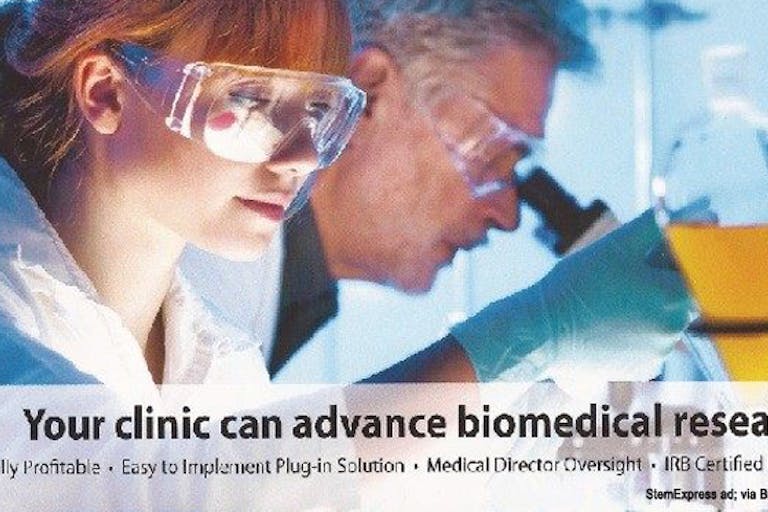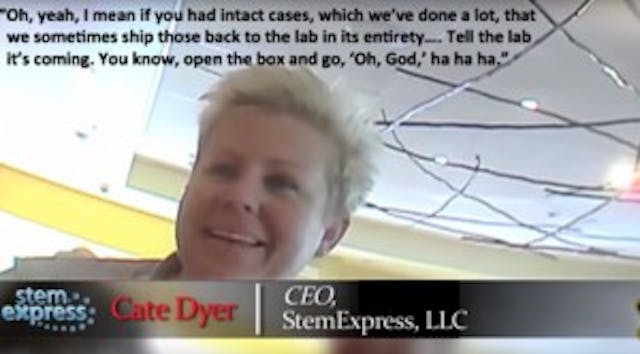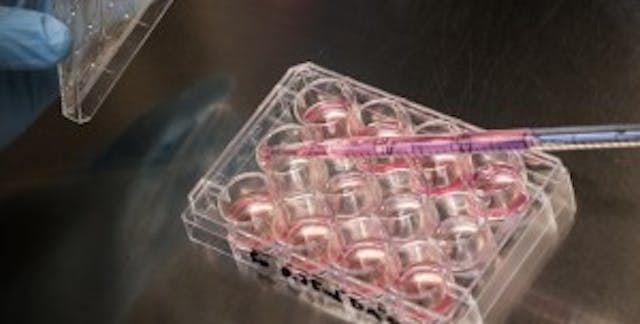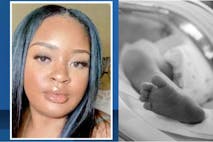
A growing number of Americans call themselves ‘pro-choice’ – but what’s really behind it?
Nancy Flanders
·
Doctor, geneticist: Planned Parenthood is lying about benefits of fetal tissue research

While Planned Parenthood president Cecile Richards informed the NIH today that the abortion giant plans to halt its acceptance of ‘reimbursement’ for the procurement of fetal body parts from its abortion facilities, she also announced that the organization will continue allowing patients to donate their aborted children’s bodies for research.
Planned Parenthood supporter Rep. Elijah Cummings called this research “critical… for millions of Americans.” Richards called it “important work.” And after the release of the first Center for Medical Progress video, Richards filmed a video response, apologizing for the “tone” of PPFA Medical Director Dr. Deborah Nucatola, who munched on salad while discussing the way she (illegally and strategically) “crushes” fetal body parts for harvesting. In that ‘apology’ video, Richards stated:
I thank those women and families who have chosen tissue donation at some point in their lives. Your commitment to lifesaving research, developing treatments for diseases like Parkinson’s and Alzheimer’s, is important and compassionate, and it should be respected – not attacked.
But was Richards being honest about the “compassionate,” “lifesaving research” being done with aborted fetal body parts? Dr. Bill Cassidy and David Prentice say no….
Proponents of using fetal body parts from induced abortion claim three areas of medical research need harvested tissue: transplantation to treat diseases and injuries, vaccine development and basic biology research. Yet the facts show neither necessity nor therapeutic success when relying on an aborted baby’s organs and tissues.
First, a little history. Human fetal tissue transplant research began decades ago. The first recorded fetal tissue transplants were in the 1920s in the U.K. and Italy; the transplants failed. In the United States, the earliest documented attempts came in the 1930s, to treat diabetes, and they also failed, as did transplant attempts in succeeding decades. By 1991 approximately 1,500 people had received fetal pancreatic tissue transplants in attempts to treat diabetes, mostly in the former Soviet Union and the People’s Republic of China. Up to 24 fetuses were used per transplant, but fewer than 2 percent of patients responded. Today, rather than failed fetal tissue, patients take insulin shots and pharmaceuticals to control their diabetes, and adult stem cell transplants have shown initial success at ameliorating diabetes.

Twenty-four fetuses per transplant? No wonder StemExpress owner Cate Dyer pointed out that the reason why her tissue procurement company partnered with Planned Parenthood for harvesting fetuses is because Planned Parenthood is a “volume institution.” And yet, StemExpress still wasn’t getting enough fetal livers and other organs to satisfy researchers.
Not only have fetal tissue and fetal stem cells resulted in no positive results, say Cassidy and Prentice, the consequences have, at times, been disastrous – especially in the area of Parkinson’s research, specifically mentioned by Cecile Richards:
Between 1960 and 1990, numerous attempts were made to transplant fetal liver and thymus for various conditions. According to a review just last year, “the clinical results and patient survival rates were largely dismal.”…
Between 1988 and 1994, roughly 140 Parkinson’s disease patients received fetal tissue (up to six fetuses per patient), with varying results. But this glimmer of utility faded when subsequent reports showed that severe problems developed from the transplants, including growth of non-brain tissues (e.g., skinlike tissue, hair, cartilage) in the brain. The first full clinical trial (funded by the National Institutes of Health) using fetal tissue for Parkinson’s patients was prominently featured in The New York Times in 2001, documenting the tragic results. Doctors described the patients writhing, twisting, and jerking with uncontrollable movements, further noting the results were “absolutely devastating,” “tragic, catastrophic,” “a real nightmare.” A second large, controlled study published in 2003 and also funded by NIH showed similar results, with over half of the patients developing potentially disabling tremors caused by the fetal brain tissue transplants.

This doesn’t sound like “lifesaving research” to me. Cassidy and Prentice point out that those who claim that fetal tissue and fetal stem cells are beneficial – which would include Planned Parenthood and its supporters – are “clinging to antiquated science (not to mention medieval ideas of organ harvest).” Imagine that: an organization which profits from aborting human beings and selling their body parts clings to antiquated ideas about science. Shocking.
On the other hand, research which doesn’t use fetal tissue or fetal stem cells shows great promise and is currently helping patients:
Today, rather than failed fetal tissue, patients take insulin shots and pharmaceuticals to control their diabetes, and adult stem cell transplants have shown initial success at ameliorating diabetes….
Conditions such as anemias and immunodeficiencies are now treated routinely with adult stem cells, including umbilical cord blood stem cells, in some instances even while the patient is still in the womb….
In decided contrast to results from fetal tissue, a recent review found that as of December 2012, over one million patients had been treated with hematopoietic (blood-forming) adult stem cells (the basis of bone marrow or cord blood transplants), with uncounted additional patients benefitting from other adult stem cell types and transplants.

Planned Parenthood continues to play upon the general public’s confusion about the difference between fetal and adult stem cell research. But their claim that fetal tissue research saves lives doesn’t hold up under scrutiny. The public needs to know that adult stem cells are the key:
Current, progressive alternatives such as induced pluripotent stem (iPS) cells provide an unlimited source of cells for study, and can be produced from the tissue of any human being without harm to the donor. These iPS cells, whose creation won the Nobel Prize, have the ability to form virtually any cell or tissue type for basic study, disease modeling or potential clinical application. Furthermore, stem cells from umbilical cord blood also show significant potential not only as laboratory models but also for therapy, and are already treating thousands of patients for numerous conditions.
Cassidy and Prentice (a physician and a former professor of medical and molecular genetics, respectively) demolish Planned Parenthood in their final paragraph, stating that “the heyday of fetal tissue research never really happened,” calling the harvesting of fetal organs “barbaric” and “obsolete”:
Congress is right to put an end to this brutal trade once and for all and to defund its remnant of ghoulish devotees.
Agreed. And while Planned Parenthood has suddenly decided that they just couldn’t withstand the bad publicity surrounding their acceptance of cash for baby parts, the fact remains that they plan to continue attempting to assuage consciences by pushing the idea that using the body parts of their 327,000 annually dismembered babies can benefit society. Not by living and contributing to society, of course, but by being hacked up for parts.
How many women has Planned Parenthood convinced to abort (thereby raking in cash from the procedures) by using the argument that killing their children was “doing an extra bit of good” because their children’s organs and tissues could benefit someone else?
In truth, science (there’s that word again) has shown that no good has come from fetal tissue harvesting. And no good has come from the ghoulish practice of abortion and harvesting body parts, no matter how Planned Parenthood and its supporters try to spin it.
Live Action News is pro-life news and commentary from a pro-life perspective.
Contact editor@liveaction.org for questions, corrections, or if you are seeking permission to reprint any Live Action News content.
Guest Articles: To submit a guest article to Live Action News, email editor@liveaction.org with an attached Word document of 800-1000 words. Please also attach any photos relevant to your submission if applicable. If your submission is accepted for publication, you will be notified within three weeks. Guest articles are not compensated (see our Open License Agreement). Thank you for your interest in Live Action News!

Nancy Flanders
·
Pop Culture
Cassy Cooke
·
International
Cassy Cooke
·
Analysis
Cassy Cooke
·
Analysis
Angeline Tan
·
Analysis
Cassy Cooke
·
Human Interest
Kelli Keane
·
Activism
Kelli Keane
·
Politics
Kelli Keane
·
Human Interest
Kelli Keane
·
Abortion Pill
Kelli Keane
·